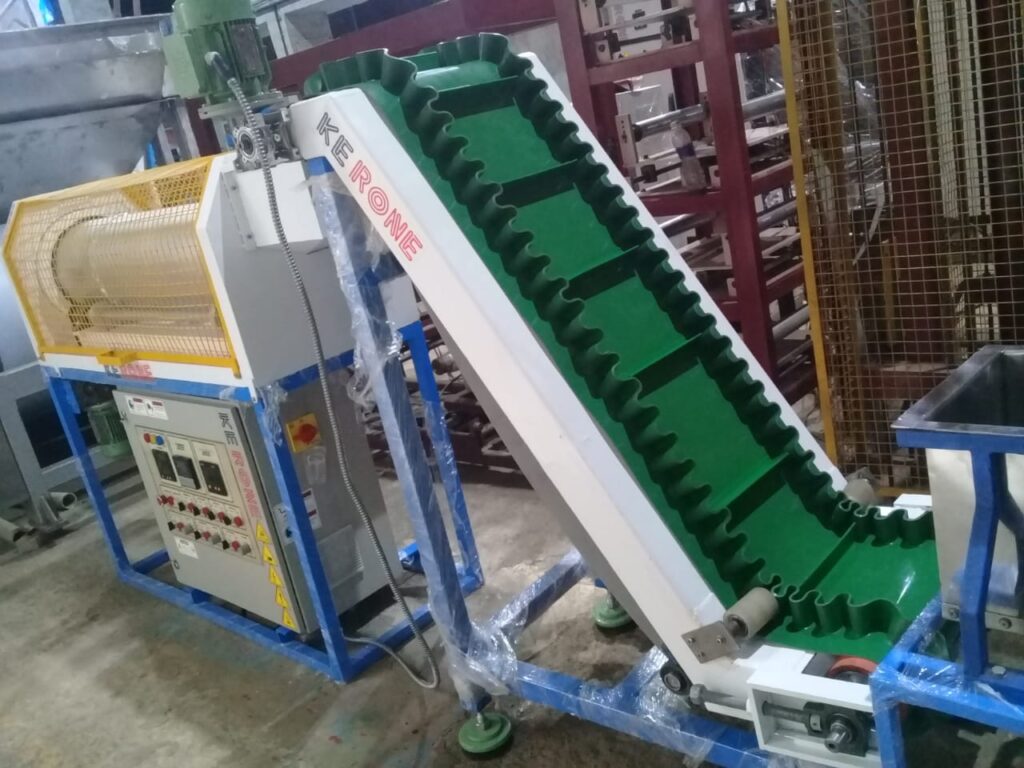The world production of coconut (Cocos nucifera L.) was about 60 million tons in 2008 [1] — 85% in Asia, 8.5% in America, 2.9% in Africa and 3.2% in Oceania. Some of the coconut-based products are coconut oil, coconut water, copra and shredded coconut. Coconut products can also be found in beverages, cosmetic and toiletries products. The fresh or industrialized coconut water is much appreciated as a natural isotonic in Brazil. Its demand reaches 1.4% of soft drink market. A serious environmental problem has come up due to the inappropriate disposal of the husks. It is estimated that 350 million liters of green coconut water are consumed in Brazil every year and this consumption produces approximately 2 million tons of green coconut husk. 70% of the waste generated in Brazilian coastal urban centers is green coconut husk.
Green coconut husk is an excellent bio-material for the adsorption of Indigo Blue from textile industries. Other studies showed that the young pulp, in its very early maturation stage, presents interesting properties to be used as ingredient in ice cream, bread and cake.
Drying is another possibility to preserve the pulp that is discarded inside the husk. There are studies of drying coconut pulp in a CD and in a conventional fluidized bed. The low efficiency of CD and the lack of uniformity of the material, which favors channeling and agglomeration under conventional fluidization, led to the innovative-pulsed fluidization technique. Product quality was evaluated by Aw, enzymatic activity, color (parameter L), moisture content and texture analyses and the results were related to the process variables. Mathematical modeling of drying curves was done too.
Material and Methods :
Cabinet drying and pulsed fluid bed drying were performed to determine drying curves at 60, 70 and 80 °C. The initial and final Aw, moisture content and product luminosity, along with the visual aspect, were the parameters used to choose the best drying conditions. After the temperature was established, the variation of luminosity, enzymatic activity, Aw and texture were determined throughout the drying process.
Extraction of coconut pulp :
The green coconut used in this work was the Nana Griff kind (Dwarf Coconut Palm), grown in the Brazilian Northeast. Coconuts were sanitized with NaClO, and coconut water was drained. The husks were cut to have the pulp extracted. The pulp was then vacuum packed, frozen and kept at -20 °C until use. The analyses were performed at least in triplicate.
Sampling :
Due to the lack of product homogeneity, the samples for the analyses were obtained by fragmentation of various pieces of pulp, thus compensating for heterogeneity.
Moisture Content :
The moisture content was determined as described in A.O.A.C.
Luminosity :
The color analyses were performed using the colorimeter COLOR EYE XTH calibrated with 10 degrees of observation angle. The parameter used was the luminosity (L*). Browning of the material was inferred by the decrease in luminosity.
Fat Content :
Coconut pulp samples were ground in mixer, dehydrated and the fat content was determined by A.O.A.C.
Enzymatic Activity :
10 g of pulp were homogenized with 100 mL of 5% polyvinylpolypyrrolidone (PVPP) suspension. The homogenate was centrifuged at 1600×g for 15 minutes at 4 °C centrifuge. Polyphenoloxidase (PPO) and peroxidase (POD) activities were determined by spectrophotometric method using a UV-VIS spectrophotometer (Varian Cary 100). The PPO activity unit was defined as an increase of 0.001 min-1 ǻ$420 min-1 (ml sample) -1, using catechol as substrate. One POD activity unit was defined as the amount of enzyme capable of producing the conversion of 1 mmol of guaiacol per second under the test conditions.
Water Activity :
Water activity was measured by a hygrometer at 25 °C
Texture Analyses :
A Texture Analyzer with a 5-mm stainless steel cylindrical probe, in a load cell of 25 kg was used. A sample was placed on a hollow planar base and the force was applied by the probe at the constant speed of 1.0 mm.s-1 and 3 mm of penetration. Force deformation data were recorded. The maximum force and the number of peaks indicated the crispness.
Cabinet Dryer (CD) :
Cabinet Dryer was manufactured by Armfield, UK (Figure 1). It consists of a 28 cm × 28 cm square duct and a fan (a) with adjustable speed, which blows the air through electric resistances (b), controlled by a PID device. A 5.0 × 102 g layer of material was spread over the surfaces of two 20 cm × 20 cm trays in the chamber. The trays were held by an analytical scale (c) enabling mass measuring during drying. Air velocity was 2.1 m-s -1 in all tests.
Pulsed Fluid Bed Dryer (PFB) :
The gas distribution system is the distinctive feature of the PFB equipment. In the experimental set-up used in this work, the distribution of airflow is provided by two disks installed upstream of the drying chamber, on opposite sides of the gas distribution chamber. These disks are synchronized for they share a common shaft.
In case of high production yield, the recommended equipment is PFB dryer because it has great productivity by allowing the drying of large amounts of green coconut pulp. The results showed that the dehydration is a good way to make the green coconut pulp useful, increasing its shelf life and providing a snack-like product.
We at KERONE have a team of experts to help you with your need for Drying in various products range from our wide experience.

